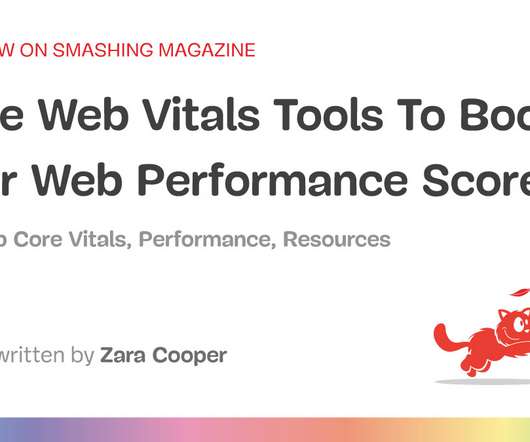Core Web Vitals Tools To Boost Your Web Performance Scores
Smashing Magazine
AUGUST 9, 2022
PageSpeed Compare is a page speed evaluation and benchmarking tool. It also lists cached resources and identifies unused Javascript. It graphs server, network, CSS, Javascript, critical content, and image optimizations to show the potential savings you could gain by incorporating fixes into your site. PageSpeed Compare.














Let's personalize your content